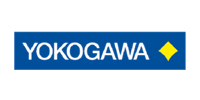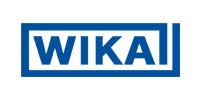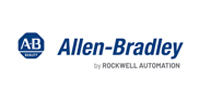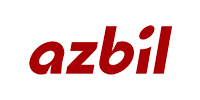Steel & Power
In the steel and power industries, industrial measuring instruments are essential for ensuring precision, safety, efficiency, and regulatory compliance throughout production processes. These instruments monitor critical parameters such as temperature, pressure, flow, gas composition, and more. Each stage of the steelmaking and power generation processes relies heavily on these instruments for maintaining product quality, optimizing energy consumption, and ensuring safe operations.
Here’s an overview of key industrial measuring instruments used in steel and power industries:
Measuring Instruments in Steel Industry
1. Temperature Sensors
- Function: Measure high temperatures in furnaces, rolling mills, and other steel processing units.
- Applications: Critical in blast furnaces, basic oxygen furnaces (BOFs), electric arc furnaces (EAFs), and continuous casting. Precise temperature control ensures steel is produced with desired properties.
- Types:
- Thermocouples: Widely used for their ability to withstand high temperatures (up to 1800°C).
- Infrared Pyrometers: Used for non-contact temperature measurement in molten steel and hot surfaces.
- Thermal Imaging Cameras: Provide real-time monitoring of surface temperatures in rolling and casting processes.
2. Flow Meters
- Function: Measure the flow rate of gases and liquids, such as water, cooling air, and molten materials.
- Applications: Used in cooling water systems, lubrication systems for rolling mills, and measuring gas flows (oxygen, nitrogen, natural gas) in steelmaking processes.
- Types:
- Coriolis Flow Meters: Used for mass flow measurement of liquids and molten metal.
- Electromagnetic Flow Meters: Ideal for measuring the flow of cooling water in casting and rolling processes.
- Vortex Flow Meters: Monitor gas flows in furnaces and blast furnaces.
3. Pressure Gauges and Transmitters
- Function: Monitor and control the pressure in gas pipelines, furnaces, and hydraulic systems.
- Applications: Pressure control is crucial in blast furnaces, air supply systems, and rolling mills to maintain safe and efficient operations.
- Types:
- Bourdon Tube Gauges: Common for high-pressure measurement in hydraulic and pneumatic systems.
- Digital Pressure Transmitters: Provide accurate, real-time data for process automation in steel plants.
4. Level Sensors
- Function: Detect and monitor the levels of raw materials like iron ore, coal, and slag in storage tanks, silos, and furnaces.
- Applications: Used in blast furnaces, slag management systems, and material handling systems to prevent overflow and ensure continuous operation.
- Types:
- Radar Level Sensors: Provide accurate non-contact measurement in high-temperature environments, such as in molten slag handling.
- Capacitive Level Sensors: Used for monitoring levels of solid raw materials like iron ore and coal.
5. Gas Analyzers
- Function: Measure the concentration of gases in furnaces, stacks, and processing units.
- Applications: Critical for monitoring oxygen, carbon dioxide, carbon monoxide, and other gases in the steelmaking process to optimize combustion and reduce emissions.
- Types:
- Infrared Gas Analyzers: Measure CO₂ and other gases in blast furnaces.
- Oxygen Analyzers: Monitor oxygen levels in furnaces to control oxidation processes.
- Sulfur Analyzers: Used in exhaust systems to measure and control sulfur emissions.
6. Thickness Gauges
- Function: Measure the thickness of steel sheets and plates during the rolling process.
- Applications: Essential for quality control in hot and cold rolling mills to ensure that steel products meet specified thickness tolerances.
- Types:
- X-Ray or Laser Thickness Gauges: Provide non-contact thickness measurement for precise control in rolling mills.
7. Hardness Testers
- Function: Measure the hardness of steel products to ensure they meet required mechanical properties.
- Applications: Used in quality control laboratories to test finished steel products such as bars, sheets, and plates.
- Types:
- Rockwell and Vickers Hardness Testers: Widely used in steel quality testing.
Measuring Instruments in Power Industry
1. Flow Meters
- Function: Measure the flow rate of steam, water, fuel, and other fluids in power generation systems.
- Applications: Used in boilers, turbines, cooling water systems, and fuel supply systems to monitor the flow of steam, water, and gas.
- Types:
- Coriolis Flow Meters: Used for mass flow measurement of fuels like natural gas or oil.
- Ultrasonic Flow Meters: Non-invasive measurement of cooling water or steam flow.
- Vortex Flow Meters: Monitor the flow of steam in boilers and turbines.

2. Temperature Sensors
- Function: Measure and control temperature in boilers, turbines, and generators.
- Applications: Critical in steam turbines, boilers, and heat exchangers to ensure efficient power generation and prevent overheating.
- Types:
- Thermocouples: Widely used in high-temperature zones, such as in steam boilers and turbines.
- RTDs (Resistance Temperature Detectors): Provide accurate temperature measurement in power plant cooling systems.
- Infrared Pyrometers: Measure surface temperatures of turbine components and other hot equipment.
3. Pressure Gauges and Transmitters
- Function: Monitor and control pressure in steam lines, boilers, and hydraulic systems.
- Applications: Used to regulate steam pressure in power plants, monitor turbine pressure, and ensure the safe operation of boilers.
- Types:
- Bourdon Tube Pressure Gauges: Common in steam systems for high-pressure applications.
- Digital Pressure Transmitters: Used for precise pressure control in turbines and boilers.
4. Level Sensors
- Function: Monitor the level of water, fuel, and chemicals in tanks and boilers.
- Applications: Level sensors are crucial in controlling water levels in steam boilers, fuel storage tanks, and coolant systems to avoid overheating or system shutdowns.
- Types:
- Ultrasonic Level Sensors: Provide non-contact level measurement in large water tanks and fuel reservoirs.
- Capacitive Level Sensors: Used for accurate measurement in fuel and chemical storage tanks.
5. Vibration Sensors
- Function: Measure and monitor the vibrations of rotating equipment like turbines, pumps, and generators.
- Applications: Vibration monitoring helps detect misalignment, bearing failures, and imbalances in rotating machinery, ensuring safe and reliable operation of turbines and generators.
- Types:
- Accelerometers: Measure vibrations in rotating equipment like turbines and generators to prevent mechanical failure.
- Proximity Probes: Detect shaft misalignment and bearing wear in turbines.
6. Gas Analyzers
- Function: Measure the concentration of gases in power plant exhausts, boilers, and combustion systems.
- Applications: Critical for monitoring emissions of carbon dioxide (CO₂), sulfur oxides (SOx), nitrogen oxides (NOx), and oxygen levels in flue gas to comply with environmental regulations.
- Types:
- Oxygen Analyzers: Measure oxygen levels in combustion systems to optimize fuel efficiency.
- CO₂ and NOx Analyzers: Monitor emissions to ensure compliance with air quality regulations.
- Sulfur Analyzers: Control sulfur emissions from coal-fired power plants.
7. Moisture Analyzers
- Function: Measure moisture content in gases and liquids to prevent equipment damage and ensure efficient operations.
- Applications: Used in the monitoring of moisture levels in steam systems and fuel gas to prevent condensation and corrosion in turbines and boilers.
- Types:
- Dew Point Sensors: Measure the moisture content in steam and fuel gases.
- Capacitive Moisture Sensors: Used in power plants to detect moisture levels in gases.
8. Thermal Imaging Cameras
- Function: Monitor heat distribution and detect overheating in electrical systems and turbines.
- Applications: Used in power generation plants to inspect electrical switchgear, transformers, and rotating equipment to detect early signs of overheating or failure.
- Types:
- Infrared Thermal Cameras: Provide real-time thermal images to monitor hot spots in electrical systems and rotating machinery.
Conclusion
In the steel industry, instruments like temperature sensors, flow meters, and gas analyzers ensure that raw materials are processed efficiently, maintaining the desired mechanical properties of steel while improving energy use. Meanwhile, in the power industry, precise control of temperature, pressure, flow, and emissions is essential for efficient and safe power generation. These industrial measuring instruments help optimize operations, prevent equipment failures, and comply with environmental standards, making them indispensable in both industries.













